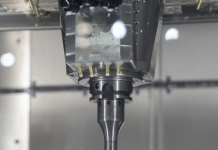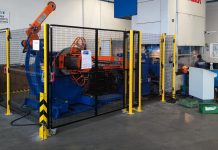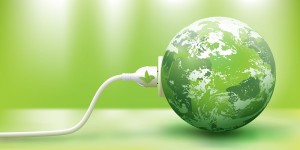 The energy use in industry and in utilities is still far from efficiency in manufacturing realities. The second edition of the industrial technology efficiency day, convention organized by business international, intended to identify the strategic and operational modalities to carry out interventions of efficiency improvement of industrial processes and to grant the saving.
The energy use in industry and in utilities is still far from efficiency in manufacturing realities. The second edition of the industrial technology efficiency day, convention organized by business international, intended to identify the strategic and operational modalities to carry out interventions of efficiency improvement of industrial processes and to grant the saving.
The first necessary step to improve the energy efficiency of a company is represented by the energy diagnosis, or energy audit, in other words the whole of the activities aimed at identifying the “health state” of a system. A real check-up that ends with the identification of the therapy, that is to say indications for the improvement. It is then the activity to be executed before any intervention of efficiency enhancement, of the certification, the drawing up of a performance contract and of the improvement assessment. The energy diagnosis allows knowing how the energy is consumed inside the productive reality. «With the new European directive about the energy efficiency 2012/27/EU and its next implementation decree, the energy diagnosis becomes mandatory for big enterprises and energy-eating companies. The audit is composed by a series of activities: collection of preliminary information and on-the-spot investigation, analysis and processing of consumption data and of collected information, calculation of performance indexes and of the reference baseline and comparison with the market reference. Once collected these information, are identified the management and technological improvement proposals, including the technical and economic evaluation (at least preliminary), to pass then to the presentation and the discussion of the results with customers. The energy audit is then an essential methodology to identify the improvement areas and to achieve saving, but generally the end-user is not able to appreciate the importance of this instrument, considering it just as a cost», explains Michele Santovito, president of Assoege, the association of the exepert in energy management.
According to Enea data, over the last ten years the energy intensity has dropped especially in the sectors of chemistry, mechanics, metallurgy and textile, with an overall reduction of the manufacturing industry by 26.3%. Since February 2014 they have issued more than 8 million Energy Efficiency Certificates (EEC), known also as white certificates; 1.4 millions only in May 2014. ECC are negotiable securities that certify the achievement of energy savings in the energy final uses through interventions and projects of energy efficiency increment. The quantitative targets of primary energy saving are expressed in Tonnes of Oil Equivalent (TOE) saved. A certificate corresponds to the saving of a Tonne of Oil Equivalent. Companies can avail themselves of the sector operating guidelines. To date, 13 have been published for the sectors, among the others, of the iron and steel industry, of wastes, glass and concrete. 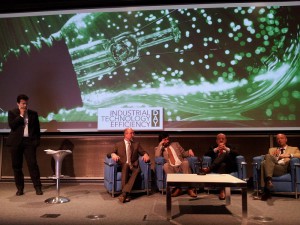
Intervention areas in automation
To make efficiency a real instrument of technical and economic innovation, we cannot give up availing ourselves of that whole series of competences and technologies in automation, control and supervision ambit, no matter whether it is a big steel plant, a packaging line or a single machine tool. Technology can do a lot to enhance the energy efficiency in industry. In his speech, Sergio Vellante, member of the Board of Directors of Anie Automazione, identified some intervention areas in the automation ambit. Electric motors, for instance, consume 132.4 Twh/year, of which 20% is wasted by using obsolete technologies. «To install an efficient motor is not sufficient: we must act on the complete kinematic chain. We produce high-efficiency propulsors but reduction gears are still backward with the 60% efficiency, whereas they should reach at least 90%».
Two thirds of the energy in industry are consumed by electric motors but the situation will evolve, also in compliance with the regulatory novelties, according to Anie Energia, as the Commission Regulation (EC) 640/2009. In the life cycle of a motor, costs concern maintenance, purchase and energy, which represents the most expensive item. High-efficiency motors can then produce a significant saving. «It is almost always convenient to replace old broken motors with a new high-efficiency motor, able to offer an energy saving from 5 to 15%, with a payback of one or two years. The replacement of operating motors is instead paid back in a period from one to three years» underlines Stefano Manasserro, manager of SottoGruppo Motori BT of Anie Energia. The association has realized an internal site (motorielettrici.enea.it) accessible for all companies that produce or market products compliant with the EC 640/2009 regulation.
… and in computer science
The energy efficiency is connected with the computer science because digitizing enhances the communication capability by transforming data into useful knowledge for improving processes and by integrating people and objects. This logic encompasses WaterGrid, a research project oriented to the development of innovative processes and technologies for the organization in districts of urban water distribution networks, submitted to the Ministry of Education by the “Azienda Risorse Idriche Napoli” (Arins) (Naples Water Resource Agency), as leader company, together with IBM Italia and the “Dipartimento di Ingegneria Idraulica, Geotecnica ed Ambientale” (DIGA) (Department of Hydraulic, Geotechnical and Environmental Engineering) of Federico II University in Naples.
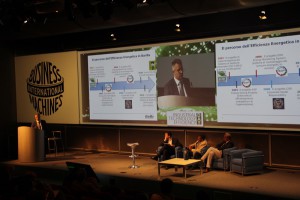 Exemplary cases: Barilla, Amadori, Ballarini
Exemplary cases: Barilla, Amadori, Ballarini
Even if awareness is the most difficult concept to be communicated, there are pioneering companies that have undertaken the way of the energy efficiency increment independently from the regulation. It is the case of three important realities of the food industry: Barilla and Amadori and the producer of household appliances Ballarini 1889. «To tell the truth, we did not start from the diagnosis but then we arrived at it» starts explaining Luca Ruini, HSE&E Health Safety Environment and Energy of Barilla. World leader in the international pasta market and in baked products in Italy, Barilla Group counts 13 brands and every year manufactures 1.7 million ton products, in 30 productive sites. The course towards the energy efficiency improvement started in 2003 with a project of implementation of the Environment Management System (ISO 14001) and its certification. In 2004, the Group started interventions of energy efficiency improvement and cogeneration to reduce energy and water consumptions in all factories, while in 2006 it adopted a remote monitoring system of the consumptions of electrical energy, methane gas and water, in order to address improvement initiatives. In 2010, Barilla started the energy audit activity while in 2012 it launched the project of implementation of the Energy Management System (ISO 50001). Through GO-RECS (Renewable Energy Certificate System), securities that certify the use of renewable energy sources for the production of electrical energy, the company has achieved important reductions of CO2 emission and of dependence on fossil fuels: all the electric energy needed for the production of Mulino Bianco, Gran Cereale and Pan di Stelle products is covered by GO-RECS, while in all pasta factories in Italy they have installed cogeneration plants for the combined production of electrical and thermal energy.
Amadori has undertaken the energy improvement course, too. With forty years of history behind, the company owns the 30% market share on the total of poultry in Italy, with a 2013 turnover of 1.32 million Euros. Its products come from 700 farms and are transformed in 6 factories distributed in North and Central Italy. With an energy cost of 10,616,000 Euros, equal to 13% of the product transformation cost, Amadori has come to the conclusion of being an energy-eating company and has undertaken the certification course according to the ISO 50001 regulation. The efficiency improvement work concerned, first of all, the Cesena plant, with wide-ranging interventions oriented not only to the environment protection but also to the animal wellbeing and to people’s work quality. The historical site taking up 145,200 square metres has been completed by a new 57,000 square metre pole that houses the biogas cogeneration featuring 1 electrical megawatt (MWe), a new 7MWt thermal power plant and new 3 and 4 Mwe cogeneration plants. At the same time, the company has started up interventions on the final use of energy: from the optimization of electrical consumptions in refrigerating power plants up to the improvement of the oxygenation of the sewage treatment plant. Over the next two years, the target is «consolidating the energy management system and reducing consumptions by 10%» states the energy manager Michele Noera.
Producer of household products and non-stick cookware, Ballarini 1889 has analysed the energy efficiency issue in view of the production of a durable good by a medium-size company: «The energy process goes on after our work and witnesses how well we have spent our energy. A durable good, besides the present represented by our activity, has a past and a future of energy» underlines the technical manager Francesco Ferron. The past is represented by the energy used before the starting point, the present coincides with the energy added by the transformation intervention while the future is constituted by the energy efficiency of the product and/or the overall energy weight used, subdivided on the presumed product life. Hence two important inferences: first of all, not necessarily the adoption of a process involving minor energy cost is more virtuous to the ends of its global impact, secondly the energy consumption is an important component of the product but it does not automatically exert a negative impact on its costs and benefits.
Commission Regulation (EC) 640/2009
The Commission Regulation (EC) 640/2009, adopted on July 22nd 2009, specifies the eco-compatible design requisites for electrical motors and the use of the electronic speed control. Requisites that are applied also when these devices are integrated into other products, for instance into machines. Since June 16th 2011, the motors launched on the market must be in IE2 efficiency class, while since January 1st 2015 the motors with power ranging from 7.5 to 375 kW must be in IE3 or IE2 efficiency class, if coupled with inverters. The same will happen for motors with power included between 0.75 and 375 kW since January 1st 2017.


